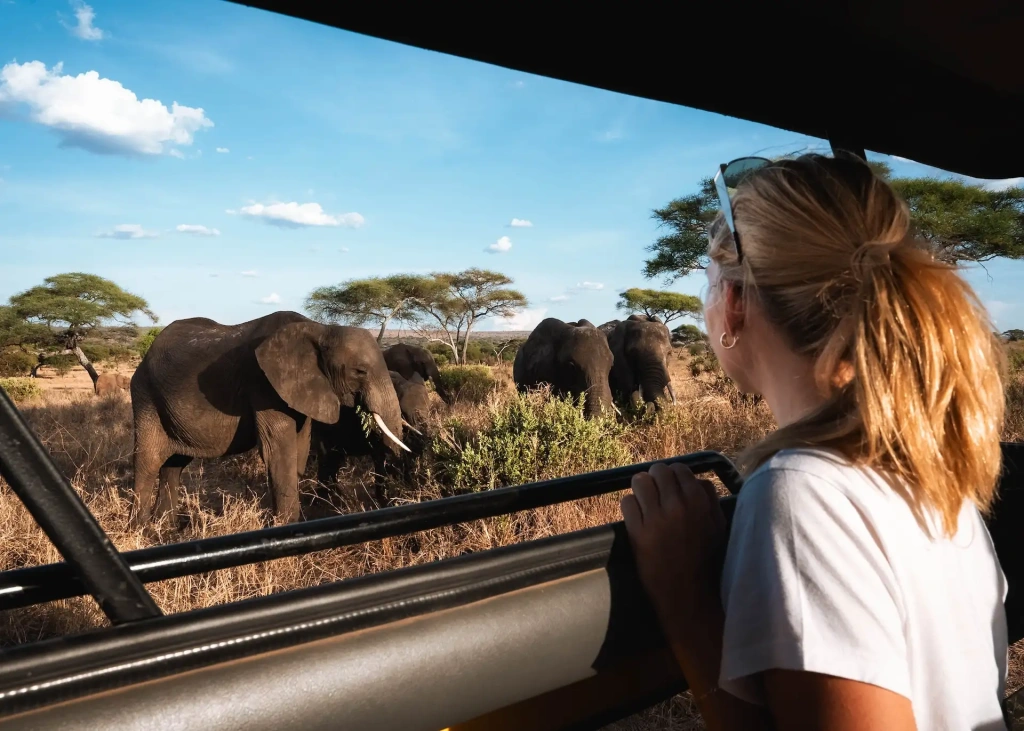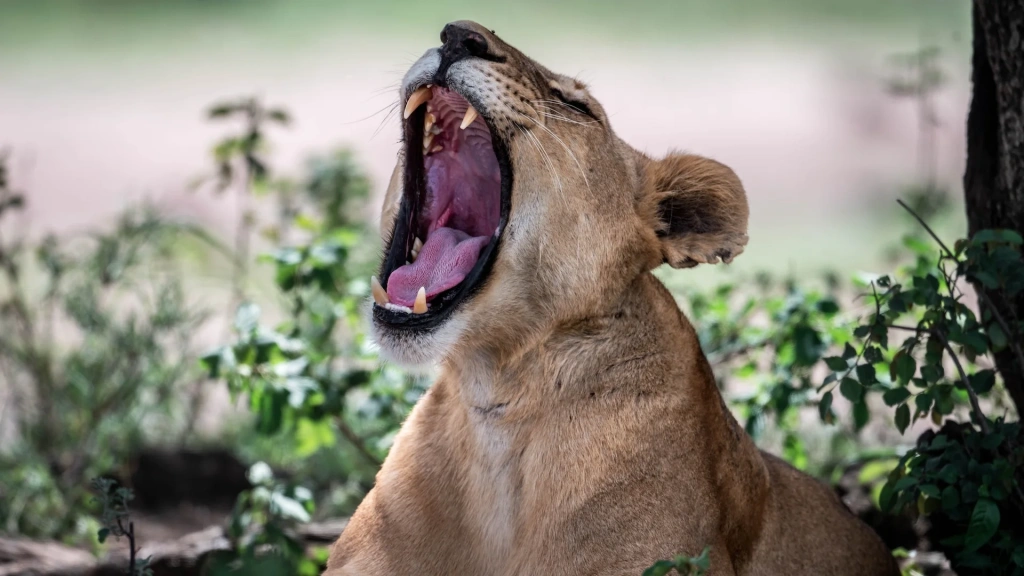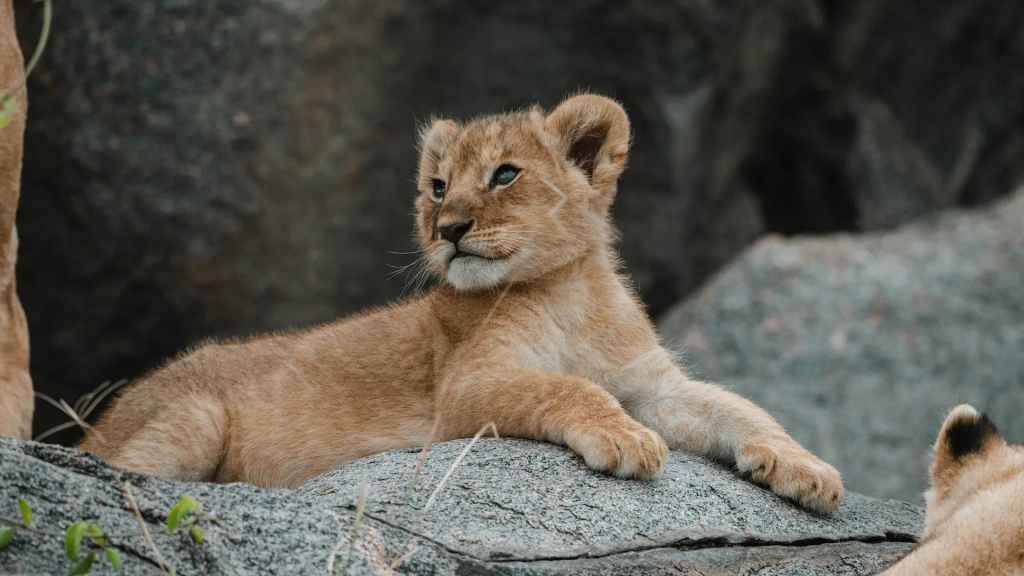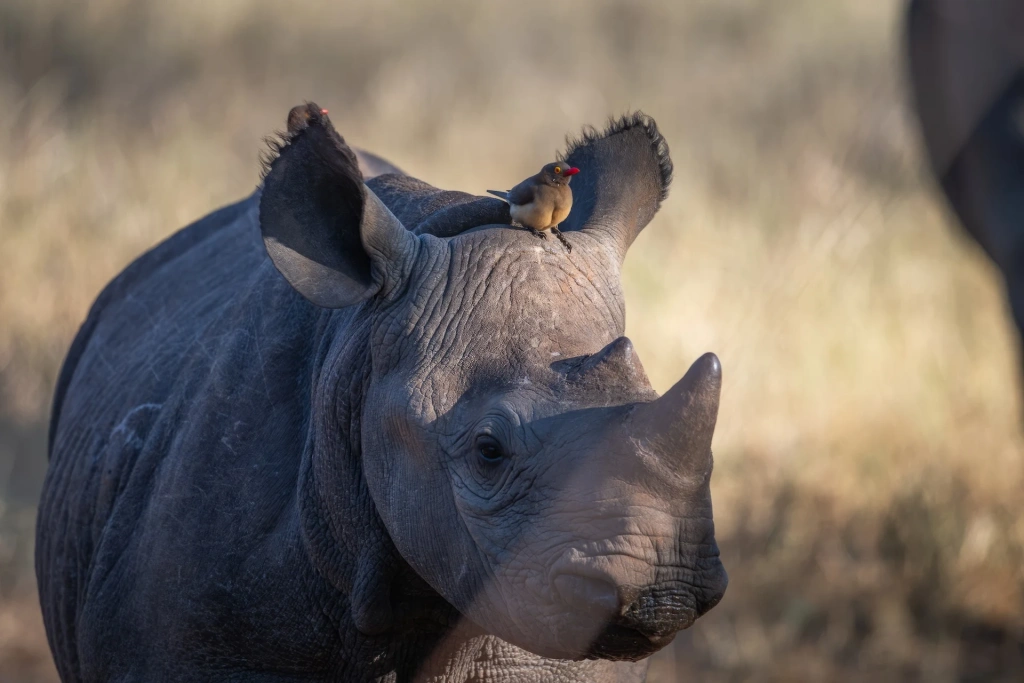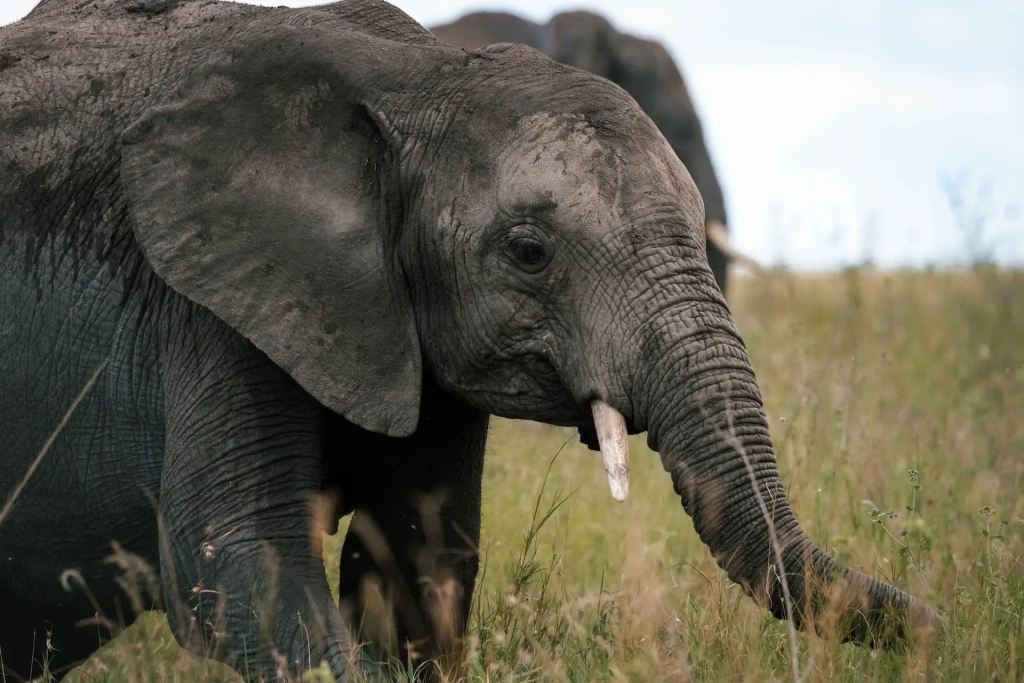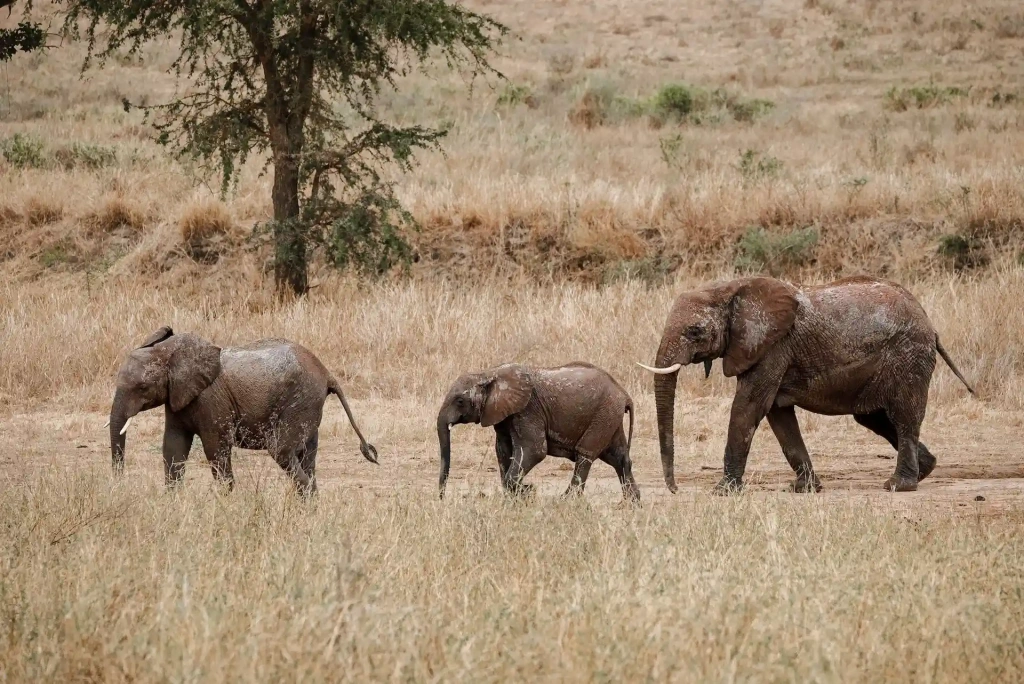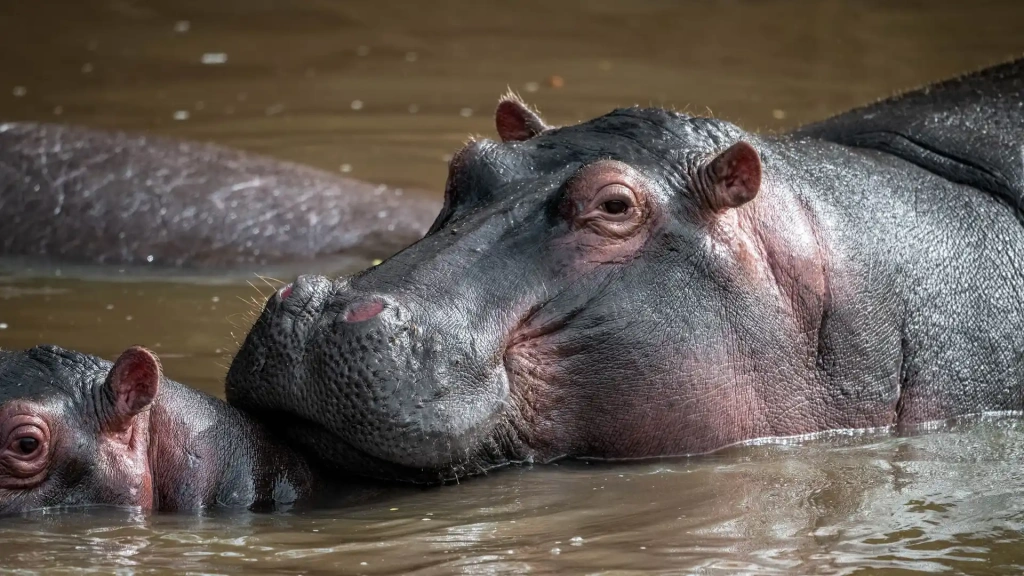Did you know that a tiny snail has more teeth than a shark and that a polar bear actually has black skin and transparent fur? Dolphins sometimes gather in groups to “sample” the poison of a pufferfish, while microscopic tardigrades can survive without food for 30 years and endure temperatures as low as -273 °C (-459 °F). Discover more of these fascinating and fun facts about animals in this Altezza Travel article.
1. Giant tortoises can weigh as much as a brown bear
On the Galápagos Islands, giant tortoises can reach impressive sizes. Males weigh between 270 and 400 kg (595–882 lb), while females are typically smaller, ranging from 130 to 250 kg (287–551 lb). For comparison, an adult brown bear weighs between 200 and 600 kg (441–1,323 lb).
These remarkable tortoises can live 100–150 years and survive more than a year without food or water, thanks to their slow metabolism. As a species, they have roamed the Earth for over 2 million years. Today, however, they are endangered.
2. Dolphins use pufferfish toxin to get intoxicated
Dolphins have been observed deliberately teasing poisonous pufferfish and mouthing them so the fish release tetrodotoxin, a powerful paralytic toxin. In small doses, however, the toxin seems to have an intoxicating effect on the dolphins. This unique behavior was captured on camera during the BBC One show Dolphins: Spy in the Pod.
Zoologist and project producer Rob Pilley told the Daily Mail that the crew handled the pufferfish very carefully to avoid harming it. Even so, the fish still released its toxin in self-defense, which is why the dolphins appeared “entranced” when they touched it.
3. Polar bears aren’t actually white
Newborn polar bear cubs are covered in fine, translucent fur and have pink “baby” skin. As they grow, their skin darkens to black or nearly black, thanks to a high concentration of melanin, a pigment that protects against ultraviolet radiation. The dark skin also helps them absorb sunlight, keeping them warm in Arctic conditions.
Their fur, meanwhile, remains transparent. It appears white because of the way light scatters and reflects off it. The coat has two layers: a dense insulating undercoat and longer guard hairs that repel moisture. Combined with a thick layer of subcutaneous fat, this structure allows polar bears to endure the extreme cold of their environment.
4. A lion’s roar can be heard up to 5 miles away
A lion’s roar can carry up to 8 km (5 mi). Male and female lions have noticeably different vocalizations, reflecting both their position within the pride and body size — larger lions produce deeper, lower-pitched roars. From an evolutionary perspective, roaring serves mainly to mark and defend territory. Essentially, the leaders create a kind of ‘sound boundary’ that helps neighboring prides keep their distance.
5. The hemispheres of some animals’ brains can work independently of each other
In science, this is called unihemispheric slow-wave sleep. While one half of the brain rests deeply, the other stays active, keeping watch over the surroundings. This remarkable ability is seen in ducks, silver gulls, geese, pigeons, sparrows, starlings, crows, and even sea lions. Individuals on the edge of a group often sleep with one eye open and one brain hemisphere alert, acting as sentries to help protect the group.
6. Rats “laugh” when they are tickled
When rats are tickled, they emit ultrasonic signals around 50 kHz. These sounds are inaudible to humans but can be detected with specialized equipment. According to Science magazine, these vocalizations may be linked to positive emotions and social interactions. Interestingly, rats have specific brain regions responsible for laughter, much like humans.
7. Lion cubs are born with spots, similar to leopards
This coloration provides camouflage for the cubs, greatly increasing their chances of survival. As they grow, the spots fade, and their fur turns the characteristic golden hue, though some adult lions may retain faint traces of the pattern.
8. Butterflies sense the flavor of plants through their feet
Butterflies’ legs are equipped with chemoreceptors: sensory organs that detect the chemical makeup of a plant’s surface. When a butterfly lands, it “tastes” the plant to determine whether it’s suitable for feeding or laying eggs.
“They can also taste with sensory organs on their mouth parts. Insects have sensory organs on different parts of their bodies. Some butterflies can ‘see’ with their back ends, and ‘hear’ with their wings”, Dr. Jayne Yack, professor of biology at Carleton University, explains.
9. A garden snail can have up to 15,000 teeth
All of these teeth are located on the radula, an organ found in the mouths of mollusks. Using it, snails scrape nutrients from leaves and algae. Unlike mammal teeth, these tiny teeth are made of chitin, a strong yet flexible material. They gradually wear down over time, but new ones continuously grow in their place.
10. A rhinoceros’s horn is made of the same protein as human hair
A rhino’s horn is made of keratin — the same protein found in human hair, nails, and animal hooves. Sunlight gradually wears down the fibers, and constant rubbing against the ground, trees, and rocks shapes the horn into its characteristic conical form. Some researchers suggest that without this rubbing behavior, a rhino’s horn might be cylindrical. However, there’s no scientific confirmation, as horn shape can also depend on genetics, age, and sex.
11. The horned lizard can shoot blood from its eyes
This defensive mechanism is called autohemorrhaging. When threatened, the lizard raises blood pressure in the vessels around its head, causing tiny capillaries near the eyes to rupture. Streams of blood can shoot up to 90 cm (35 in), startling predators. The lizard can also puff up its body, nearly doubling its size.
12. Flamingos aren’t actually pink
Flamingo chicks are born with grey plumage. Their iconic pink color develops later, thanks to their diet. They feed mainly on algae and small crustaceans rich in carotenoids, natural pigments that give their feathers the distinctive hue. This coloration is especially important during the breeding season, as a deep pink signals good health and the ability to find food successfully.
13. Cockroaches can live for a week without their heads
Cockroaches don’t breathe through their mouths or noses, but through special openings on their bodies called spiracles. This is why a cockroach can survive for so long without its head. The severed head can continue to show reflex movement for several hours until its stored oxygen runs out. Unlike humans and many other animals, cockroaches lack high blood pressure and a complex circulatory system. Instead, oxygen is delivered directly to their organs through a different mechanism.
14. Baby elephants suck on their trunks
Baby elephants use their trunks much like human infants use a thumb or a pacifier. This helps them self-soothe while also learning to control this remarkable organ, which contains over 50,000 individual muscle fiber groups. Interestingly, even adult elephants sometimes repeat this behavior in stressful situations — a habit carried over from childhood.
15. Tardigrades can survive in space and go without food for more than 30 years
These microscopic creatures, measuring up to 0.5 mm (0.02 in), can survive extreme conditions — from near -273 °C (-459 °F) to 150 °C (302 °F) and pressures up to 6,000 atmospheres, about six times that at the bottom of the Mariana Trench. They achieve this through cryptobiosis, a state in which they nearly dehydrate, slow their metabolism to a minimum, and can go without food or water for more than 30 years.
In 2007, the European Space Agency (ESA) sent tardigrades into space aboard the FOTON-M3 satellite. Remarkably, some survived and returned to Earth, even after exposure to the vacuum of space and radiation.
16. The ghost crab has teeth in its stomach
Ghost crabs use these teeth to grind food and for defense. Scientists at the Scripps Research Institute in the USA discovered that when threatened, the crabs rub their teeth together, producing a low-frequency sound that, from a distance, resembles a quiet growl. This helps them ward off predators.
17. Male seahorses carry and give birth to their offspring
Seahorses have a unique reproductive system: after mating, the female deposits eggs into the male’s brood pouch, which acts like a uterus, protecting the embryos and supplying them with oxygen and nutrients. During birth, the male contracts the pouch muscles to release the young, which are already capable of feeding and swimming independently.
18. Elephants have a 22-month pregnancy
Elephants have the longest pregnancy of any land animal, lasting up to 680 days — nearly 22 months. At birth, a baby elephant is physically well-developed, with mature nervous and sensory systems that control movement, reflexes, hearing, vision, and more. This enables the calf to join in the social life of the herd almost immediately.
19. Vultures protect themselves from heat by urinating on their legs
As the liquid evaporates, it helps lower their body temperature. This natural mechanism, called urohidrosis, is common in birds with exposed leg skin and a well-developed network of blood vessels. Besides vultures, flamingos are also known to use this cooling strategy.
20. Gorillas can dismantle poachers’ traps.
In 2012, at Volcanoes National Park in Rwanda, two four-year-old gorillas named Rwema and Dukore dismantled two poachers’ traps set within their territory. This was the first recorded instance of such behavior. Veronica Vecellio, the gorilla research program coordinator who witnessed the event, noted that the gorillas acted confidently, showing clear familiarity with the task.
21. Hippos secrete acids that protect their skin from ultraviolet radiation
Hippos secrete a substance often called blood sweat, a reddish-orange fluid that protects their skin from ultraviolet rays and inhibits bacterial growth. Occasionally, this secretion can mix with a mother’s milk, giving it a pinkish tint. This is how the myth that hippos naturally produce pink milk began.
22. A dog’s sense of smell is dozens of times stronger than a human’s
Humans have about 5 million olfactory receptors, while dogs have more than 220 million. Certain breeds, such as shepherds and hounds, even have around 300 million. Their nasal cavity is also intricately structured: when a dog inhales, the air splits into two streams, with one going to the lungs and the other to the olfactory receptors. This boosts their sense of smell and allows them to analyze scent information in remarkable detail — for example, identifying the components of food and determining whether it’s safe.
Despite this superpower, a dog’s sense of taste is less developed than a human’s. They have about six times fewer taste receptors, roughly 1,700 compared to our 9,000.
23. Spider silk is several times stronger than steel
Spider silk is about 1,000 times thinner than a human hair and lighter than cotton, yet some species can produce fibers several times stronger than steel. One of the most remarkable examples is Darwin’s bark spider from Madagascar. It spins the largest webs in the world, up to 25 m (82 ft) in diameter, sometimes stretching them across rivers and waterfalls. The tensile strength of its silk reaches 1,600 MPa (megapascals), comparable to strong steel wire. These exceptional properties come from the silk’s protein structure, including nanocrystals embedded within the fibers.
24. Dolphins call each other by name
Each dolphin has a unique whistle that functions like a name. It develops within the first months of life and remains unchanged throughout adulthood. When communicating, dolphins imitate one another’s whistles, allowing individuals to recognize and respond to their own “signature” call. This system helps them coordinate group movements and hunting.
Elephants use a similar system, but with a twist. Instead of imitating one another’s voices, they assign each herd member an individual vocal signature — essentially giving each elephant its own name.
25. Pigeons can detect cancer in humans
A team of scientists in the USA trained pigeons to recognize images of cancer cells. Individual birds achieved diagnostic accuracy rates of up to 85%, and when their results were combined, accuracy reached 99%. Experts attribute this to pigeons’ exceptional vision — they can detect tiny differences in color and shape that humans often miss. With proper training, these birds can analyze medical images as effectively as computer image-recognition algorithms.
All content on Altezza Travel is created with expert insights and thorough research, in line with our Editorial Policy.
Want to know more about Tanzania adventures?
Get in touch with our team! We've explored all the top destinations across Tanzania. Our Kilimanjaro-based adventure consultants are ready to share tips and help you plan your unforgettable journey.















